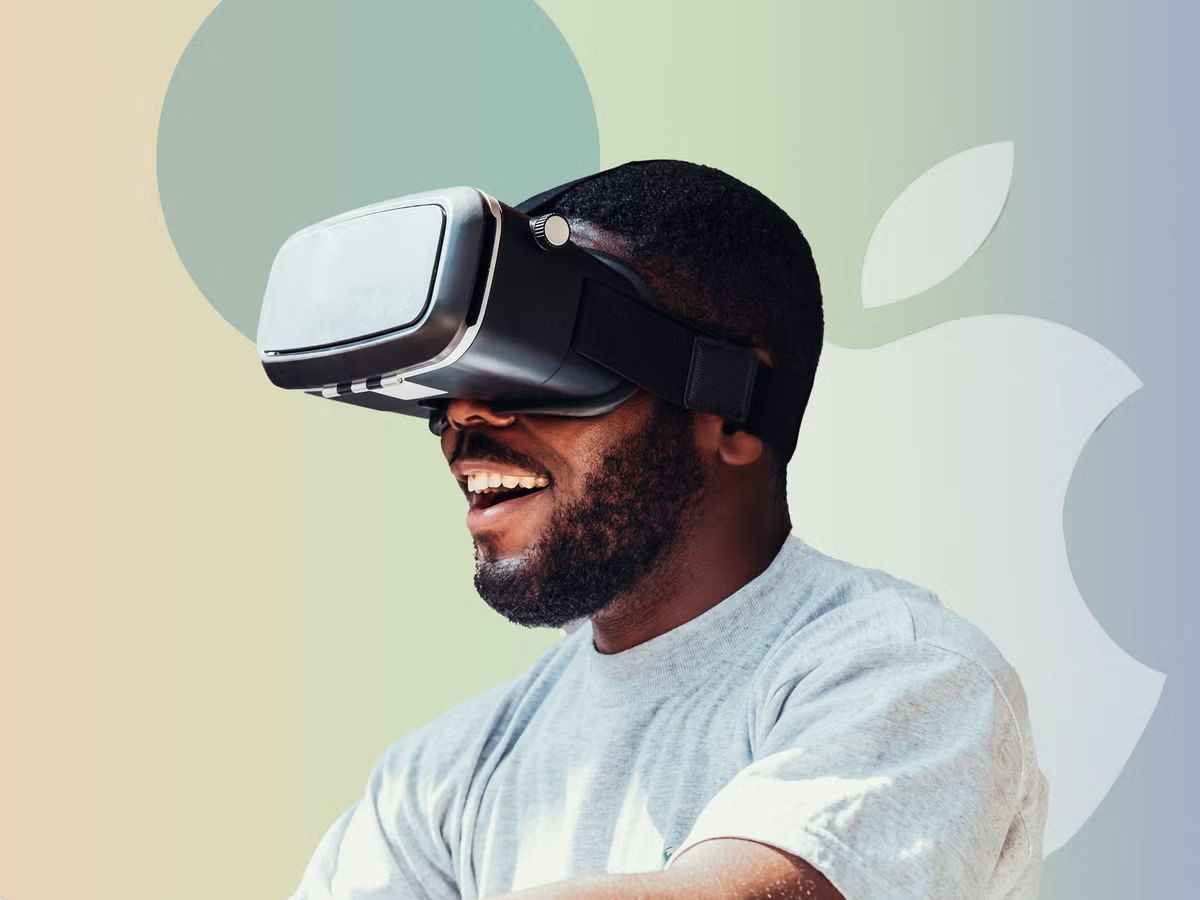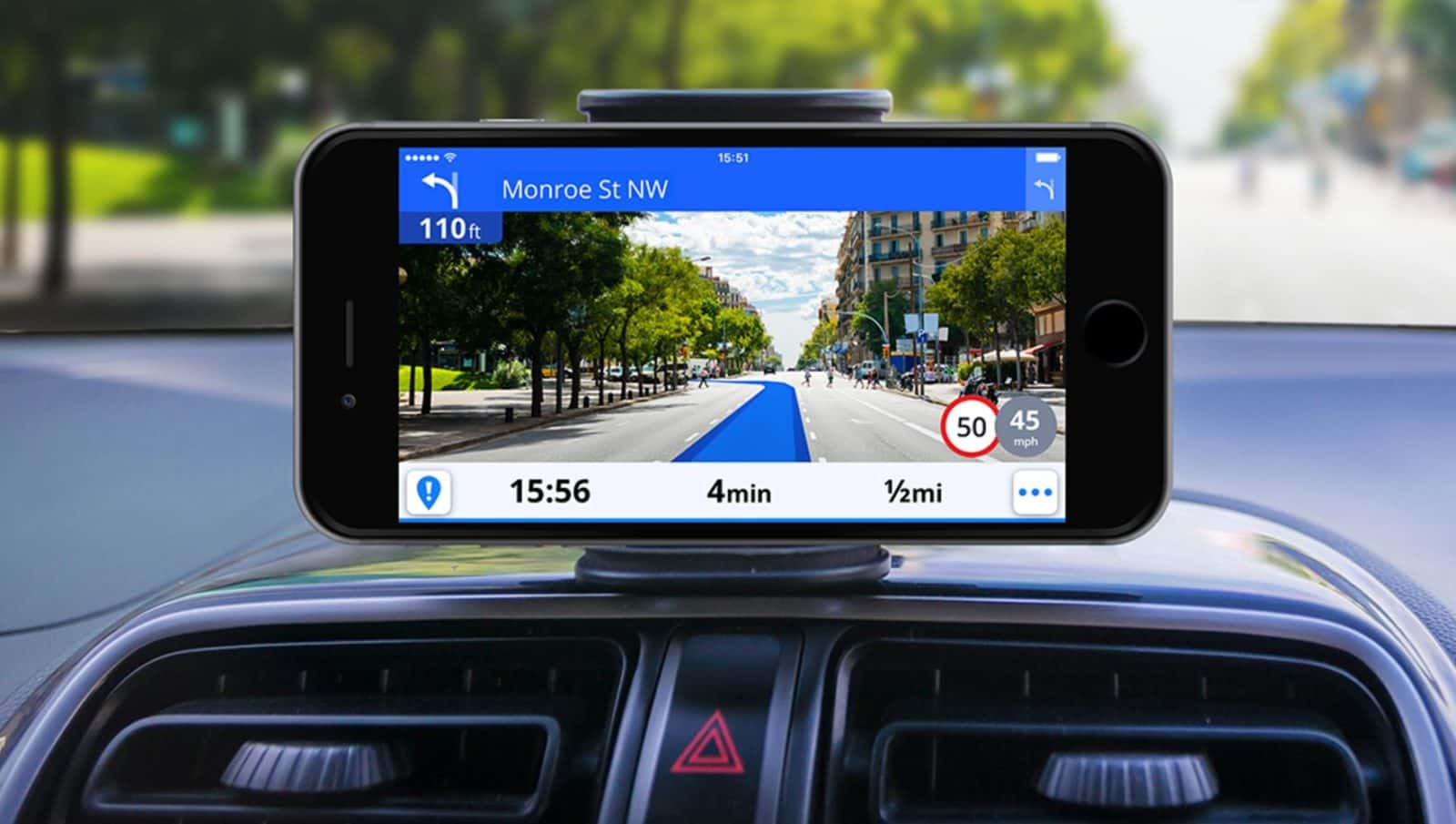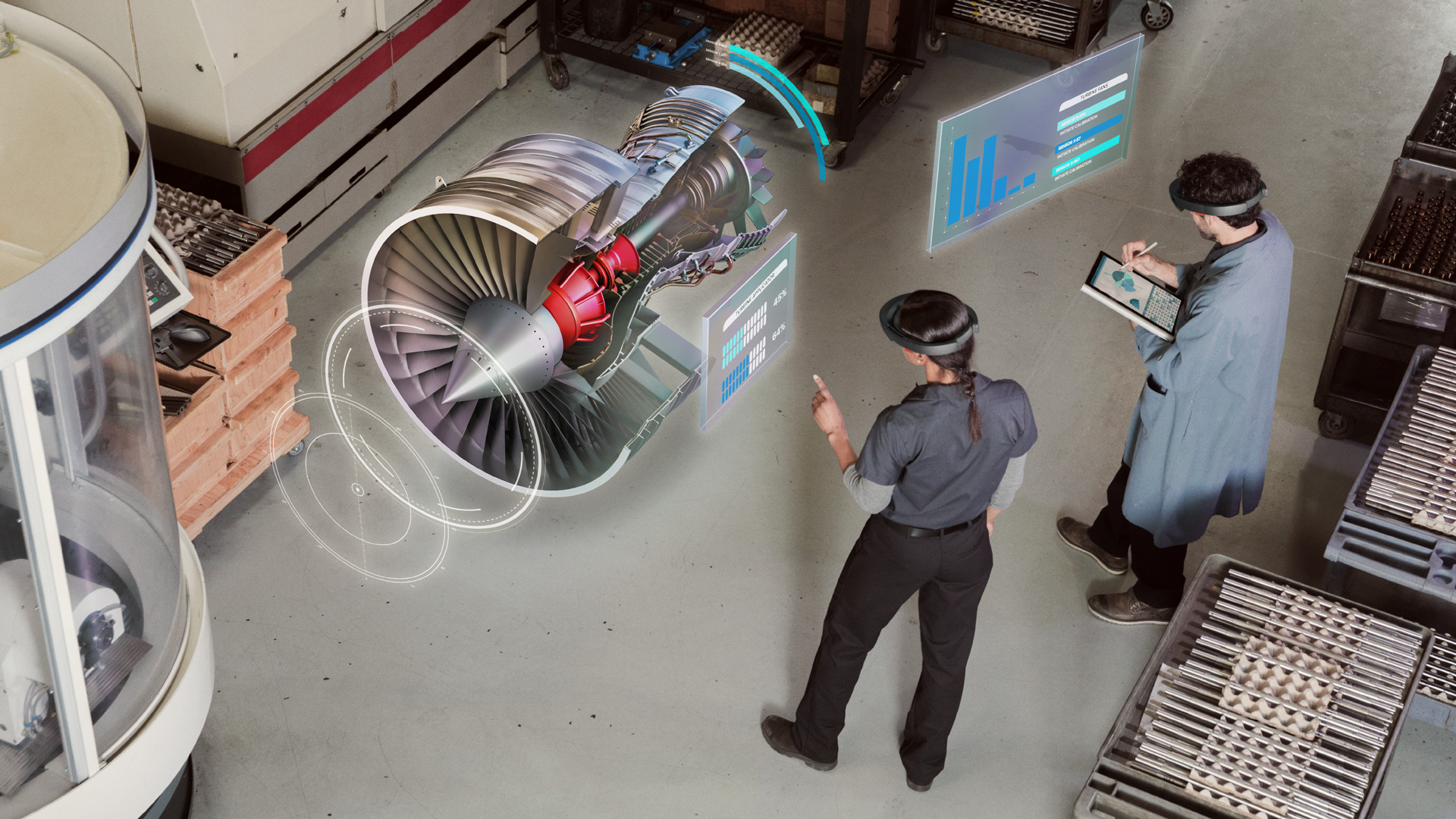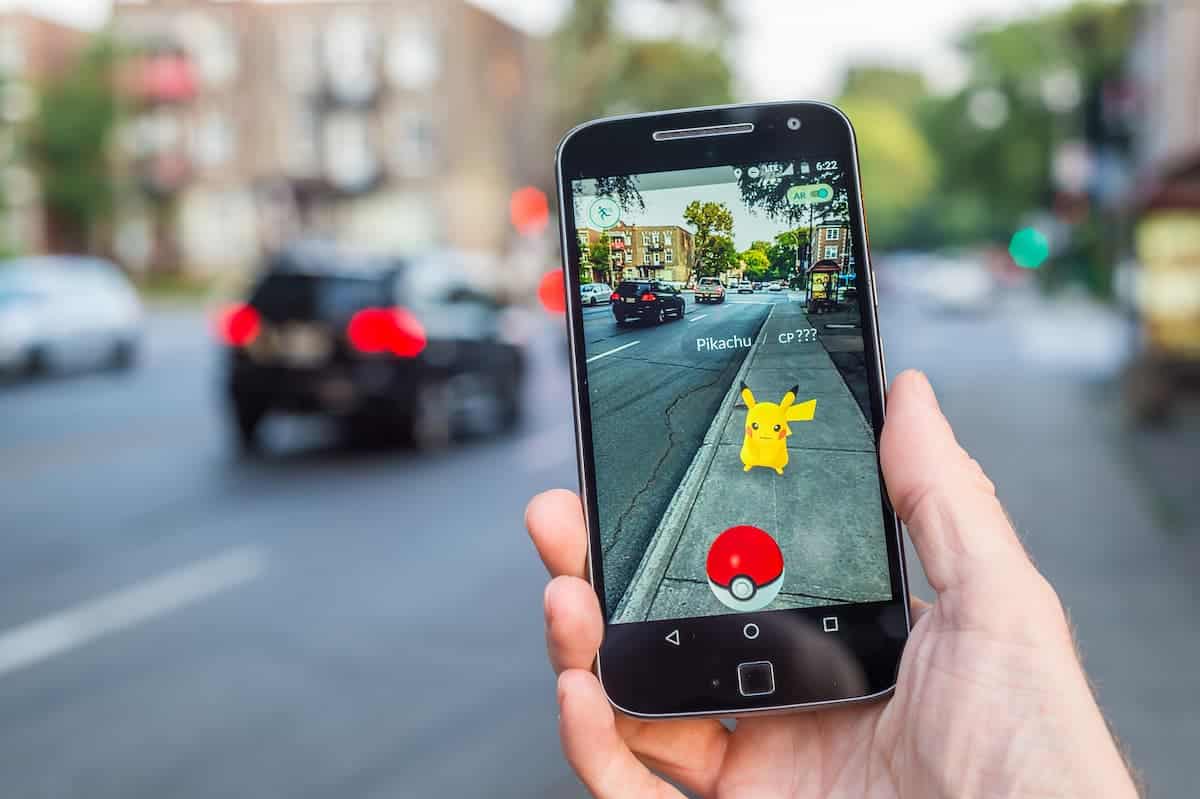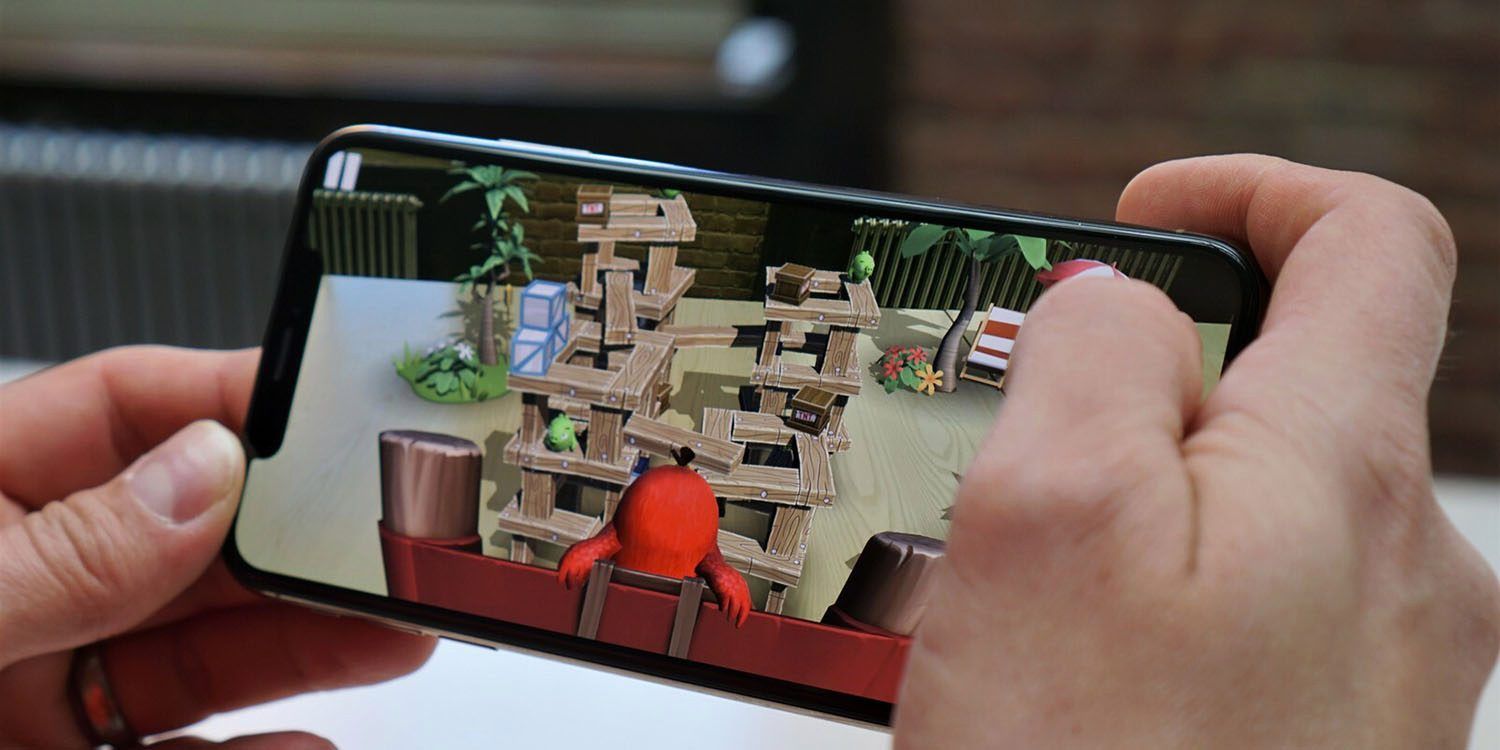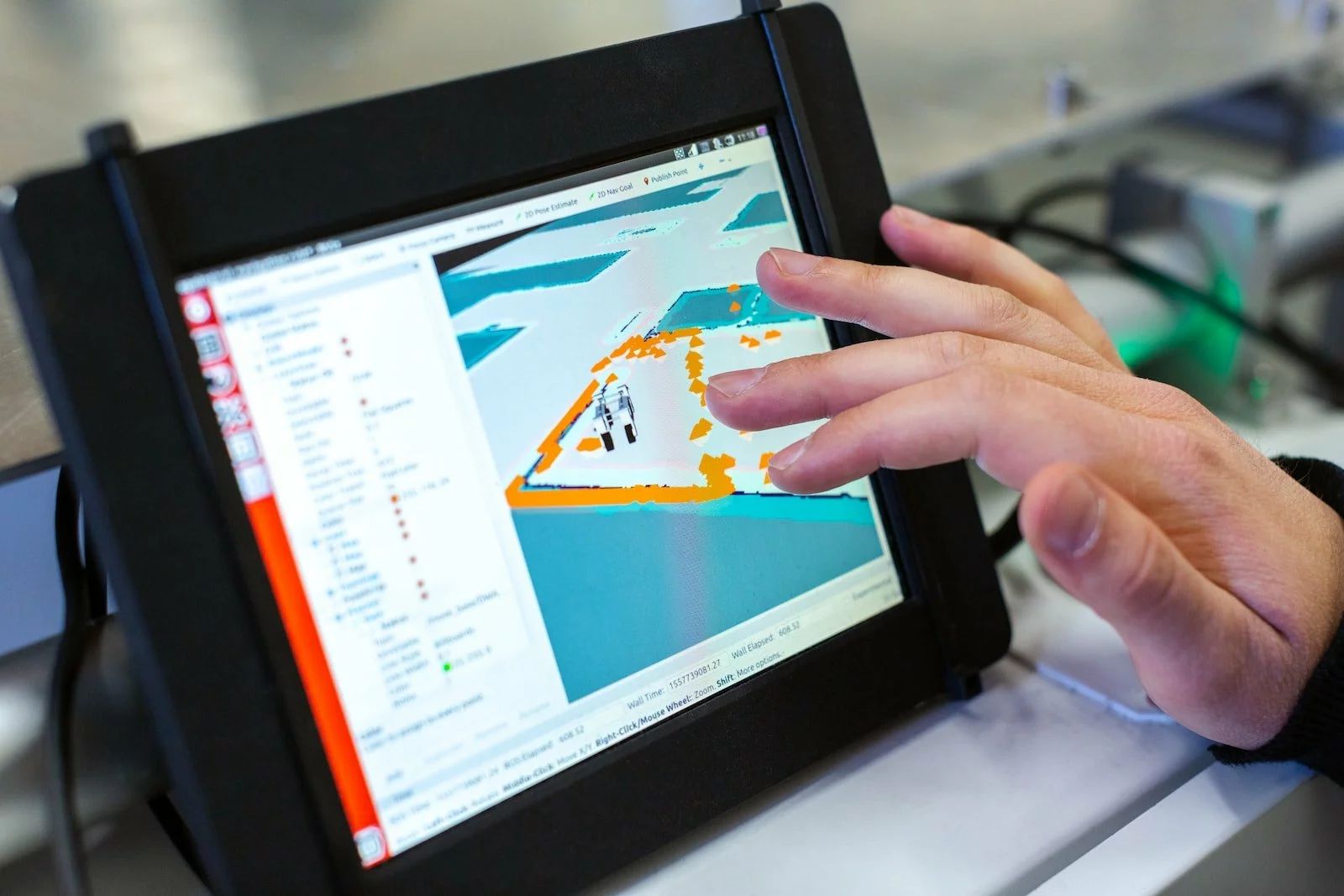Introduction
Augmented Reality (AR) and Virtual Reality (VR) are two emerging technologies that have revolutionized the way we interact with the digital world. As the lines between the physical and virtual realms continue to blur, the applications of AR and VR have become increasingly ubiquitous in various fields, ranging from entertainment and gaming to healthcare and education.
AR refers to the technology that overlays digital elements, such as images, videos, or animations, onto the real world in real-time. It enhances our perception of reality and provides an immersive experience by blending virtual content with our physical surroundings.
On the other hand, VR refers to a simulated environment that immerses users in a completely virtual world. By wearing a VR headset, users are transported to a computer-generated environment that can be interactive and highly realistic, allowing for a fully immersive experience.
Both AR and VR have gained significant traction in recent years, fueling a wave of innovation and possibilities. From enhancing entertainment experiences to revolutionizing industries like healthcare and manufacturing, these technologies have the potential to redefine how we interact with the world and reshape various sectors of the economy.
In this article, we will delve deeper into the concepts of AR and VR, explore their respective uses and applications, discuss their advantages and limitations, and highlight the differences between the two technologies. By the end, you will have a comprehensive understanding of the potential of AR and VR and the impact they can have on our daily lives.
What is Augmented Reality (AR)?
Augmented Reality (AR) is a technology that superimposes digital information, such as images, videos, or animations, onto the real world in real-time. It enhances our perception of reality by seamlessly blending virtual content with our physical surroundings.
AR relies on the use of various technological tools, such as smartphones, tablets, smart glasses, or headsets, to overlay digital content onto the real world. This content can range from simple text or graphics to complex 3D models and interactive elements.
Unlike Virtual Reality (VR), which creates a completely virtual environment, AR enhances the existing real world by adding virtual elements to it. This allows users to interact with the virtual content while still being aware of their physical environment.
The applications of AR are vast and diverse. In the entertainment industry, AR has been widely used in gaming, with popular games like Pokemon Go and Harry Potter: Wizards Unite incorporating AR elements into their gameplay. It also has the potential to transform the way we consume media, by overlaying additional information, such as pop-up facts or character details, onto TV shows, movies, or live sports broadcasts.
AR also has numerous practical applications in various industries. In healthcare, it can be used for surgical training, providing doctors with a virtual representation of the patient’s anatomy during a procedure. In architecture and design, AR can be utilized to visualize structures and interior designs in real-time, giving clients a virtual tour of their future spaces. AR can also revolutionize the way we shop by allowing virtual try-ons of clothing or visualizing furniture in our own homes before making a purchase.
As the technology continues to advance, AR is expected to become increasingly immersive and accessible. With the growing popularity of wearable devices and the integration of AR capabilities into smartphones and tablets, this technology is poised to become a ubiquitous part of our daily lives.
Uses and Applications of Augmented Reality
Augmented Reality (AR) has a wide range of applications across various industries, transforming the way we work, play, and interact with the world. Let’s explore some of the key uses and applications of AR:
- Gaming and Entertainment: AR has revolutionized the gaming industry, with popular games like Pokemon Go and Minecraft Earth capturing the imagination of millions of players worldwide. By overlaying virtual elements onto the real world, AR games provide an immersive and interactive gaming experience.
- Education and Training: AR has immense potential in education and training. It can be used to enhance learning experiences by providing interactive and engaging content. For example, AR can bring historical events to life with virtual reenactments or assist in complex science experiments with virtual lab simulations.
- Healthcare: AR is making waves in the healthcare industry. Surgeons can use AR overlays during surgeries to visualize internal organs and critical structures, improving accuracy and efficiency. AR can also aid in medical training by providing realistic simulations for students and enabling remote consultations and diagnosis.
- Manufacturing and Design: AR is transforming manufacturing and design processes. It allows engineers and designers to visualize 3D models in a real-world context, making it easier to spot design flaws or evaluate product prototypes. AR also enables technicians to receive virtual instructions and guidance for complex assembly procedures.
- Retail and E-commerce: AR is changing the way we shop. Virtual try-on experiences allow customers to see how clothing or accessories look on them without physically trying them on. AR can also be used to visualize furniture and home decor in a customer’s space before making a purchase decision.
- Marketing and Advertising: AR is a powerful tool for marketing and advertising campaigns. Brands can engage audiences with interactive AR experiences, such as virtual try-ons, games, or immersive storytelling. AR also enables product visualization and demonstration, allowing customers to see how products fit into their lives.
- Tourism and Travel: AR enhances tourism and travel experiences by providing virtual guides and information overlays at historical sites, museums, and landmarks. It can offer interactive maps, historical facts, and augmented views to enrich visitors’ understanding and appreciation of their surroundings.
- Architecture and Real Estate: AR is revolutionizing the way architects and real estate professionals showcase properties. AR allows clients to visualize proposed buildings or renovations in a real-world context, providing an immersive and accurate representation of their future space.
These are just a few examples of how AR is being utilized across industries. As technology advances and AR becomes more accessible, we can expect to see even more innovative and exciting applications in the future.
Advantages and Benefits of Augmented Reality
Augmented Reality (AR) offers a plethora of advantages and benefits that have contributed to its growing popularity and adoption across various industries. Let’s explore some of the key advantages and benefits of AR:
- Enhanced User Experience: AR provides a unique and immersive user experience by blending virtual content with the real world. It adds a new dimension to how we interact with digital information, making it more engaging, interactive, and personalized.
- Improved Learning and Training: AR has the potential to revolutionize education and training. By overlaying virtual content onto real-world objects or scenes, AR enhances learning experiences and improves retention. It enables hands-on and interactive learning, making complex concepts more accessible and understandable.
- Increased Productivity and Efficiency: AR can streamline workflows and boost productivity. For example, in manufacturing and maintenance, AR overlays can provide step-by-step instructions and visual guidance, reducing errors and speeding up tasks. AR can also facilitate remote collaboration, allowing experts to provide guidance and assistance from afar.
- Improved Decision Making: AR can provide real-time contextual information, assisting users in making informed decisions. In fields such as architecture, design, and healthcare, AR can visualize proposed changes or provide vital information about a patient’s condition, enabling better decision-making processes.
- Cost Savings: AR can yield cost savings in various ways. For instance, AR can reduce the need for physical prototypes in product design and development, saving time and resources. In training scenarios, AR can simulate real-world situations, eliminating the need for expensive equipment or potentially hazardous environments.
- Enhanced Marketing and Engagement: AR provides innovative marketing opportunities by engaging customers in interactive and immersive experiences. AR-powered marketing campaigns can create memorable and shareable experiences, strengthening brand engagement and driving customer loyalty.
- Improved Customer Service: AR can enhance customer service by providing on-the-spot assistance and guidance. For example, in retail or tourism, AR can help customers navigate stores or attractions, provide real-time product information, or offer personalized recommendations.
- Accessibility and Inclusivity: AR has the potential to make technology more accessible and inclusive. It can provide visual or auditory aids for individuals with disabilities, enabling them to navigate and interact with their surroundings in new ways.
These are just a few of the many advantages and benefits of Augmented Reality. As the technology continues to evolve, we can expect to see even more innovative and impactful applications in the future.
Challenges and Limitations of Augmented Reality
While Augmented Reality (AR) offers numerous advantages and benefits, it also faces certain challenges and limitations. These factors can impact its widespread implementation and adoption. Let’s explore some of the key challenges and limitations of AR:
- Technical Limitations: AR technology is still evolving, and there are technical limitations that need to be addressed. These include limitations in tracking accuracy, latency issues, and hardware constraints. For AR to reach its full potential, advancements in hardware and software development are crucial.
- Cost: AR can require significant financial investments, especially for businesses implementing large-scale AR solutions. The cost of AR devices, development, and maintenance can be a barrier to adoption for some organizations, particularly smaller businesses and startups.
- Privacy and Security Concerns: AR raises privacy and security concerns. The integration of AR into our daily lives means that personal data and real-world locations are involved. Ensuring data security, protecting privacy, and preventing unauthorized access to AR systems and user information are important challenges that need to be addressed.
- User Acceptance and Learning Curve: AR technologies require users to adapt to new interfaces, gestures, and interactions. This can create a learning curve and resistance to adoption. User acceptance and education about AR capabilities and benefits are vital to overcome this challenge.
- Content Creation: Creating high-quality AR content can be complex and time-consuming. Developing 3D models, animations, and interactive elements that seamlessly integrate with the real world requires expertise and resources. Increasing the availability of user-friendly content creation tools can help mitigate this challenge.
- Social Acceptance and Etiquette: As AR becomes more prevalent, social acceptance and appropriate usage become important considerations. Issues such as distractions caused by AR in public spaces, invasion of privacy, and potential disconnect from the real world need to be addressed to ensure a harmonious integration of AR into society.
- Regulatory and Legal Framework: The rapid development of AR technology has outpaced regulatory and legal frameworks. Establishing guidelines and regulations for AR usage, especially in sensitive areas like healthcare, education, and public spaces, is necessary to ensure ethical and responsible implementation.
- Accessibility and Inclusivity: While AR has the potential to enhance accessibility, it can also create barriers for individuals with disabilities. Ensuring that AR experiences are accessible to all users, regardless of physical or cognitive abilities, is an important consideration for developers.
These challenges and limitations highlight the need for continued research, innovation, and collaboration among industry stakeholders to address these issues and unlock the full potential of Augmented Reality.
What is Virtual Reality (VR)?
Virtual Reality (VR) is a technology that simulates a computer-generated environment that users can interact with using specialized devices, such as VR headsets. VR creates a fully immersive and artificial environment that can be experienced through visual and auditory stimuli.
By wearing a VR headset, users are transported to a virtual world that can be realistic or fantastical. The virtual environment is generated by computer graphics and is often designed to replicate real-world settings or create entirely new and imaginative worlds.
VR technology creates a sense of presence, making users feel as though they are physically present in the virtual space. It achieves this through various techniques, including stereoscopic displays that provide a 3D visual experience and sensors that track the user’s movements to enable interaction within the virtual environment.
VR experiences can range from simple visual simulations to complex and interactive virtual worlds. Users can explore and interact with their environment, either through physical movements or using handheld controllers that allow them to manipulate objects and navigate the virtual world.
VR has found applications in various industries, such as gaming, entertainment, education, healthcare, and training. It offers a unique and immersive experience that can transport users to new realms, allowing them to engage in virtual adventures, experience historical events, learn in interactive virtual classrooms, or undergo realistic medical simulations.
The technology behind VR continues to advance rapidly, with improvements in resolution, field of view, and tracking capabilities. As a result, VR experiences have become more realistic and less prone to inducing motion sickness, leading to wider adoption and exploration of its potential in various fields.
It is important to note that VR should be used in controlled environments with safety precautions in place. Prolonged use of VR or inadequate VR settings may lead to discomfort or eyestrain, and it is advised to take breaks and adjust settings according to individual comfort levels.
In summary, Virtual Reality is an immersive technology that creates a computer-generated environment, replicating real-world settings or inventing new ones. Users can explore and interact with this virtual world, creating unique experiences that have applications across different industries.
Uses and Applications of Virtual Reality
Virtual Reality (VR) has a wide range of uses and applications across various industries, revolutionizing the way we experience entertainment, education, healthcare, training, and more. Let’s explore some of the key uses and applications of VR:
- Gaming and Entertainment: VR has transformed the gaming industry by providing immersive and interactive experiences. VR gaming allows players to feel as if they are physically present in the game world, enhancing the sense of immersion and realism. From action-packed adventures to immersive storytelling, VR gaming offers a new level of engagement and excitement.
- Education and Training: VR is used to enhance education and training experiences. Virtual classrooms and training simulations enable students and professionals to learn in realistic, hands-on environments. VR allows for interactive experiences in subjects like science, history, and engineering, making learning engaging and memorable.
- Healthcare and Therapy: VR has a significant impact on the healthcare industry. It is used for medical training simulations, allowing medical professionals to practice procedures in a realistic environment. VR is also utilized in pain management and therapy, providing immersive and distractive experiences to help patients cope with pain or anxiety.
- Architectural Visualization: VR enables architects and designers to visualize and present their designs in a three-dimensional and immersive environment. Clients can virtually walk through buildings, explore spaces, and make more informed decisions about their designs.
- Tourism and Travel: VR enhances the tourism and travel industry by providing virtual travel experiences. Users can explore destinations, landmarks, and attractions without leaving their homes. VR can also offer virtual tours of hotels, giving travelers a taste of their lodging options.
- Engineering and Manufacturing: VR is used in engineering and manufacturing industries for virtual prototyping and product development. It allows engineers to visualize and test product designs in a virtual environment, saving time and resources associated with physical prototypes.
- Military and Defense: VR is utilized in military and defense applications for training simulations, mission planning, and virtual combat scenarios. It provides a safe and cost-effective way to prepare soldiers for real-world situations and improve decision-making skills.
- Mental Health and Therapy: VR offers therapeutic benefits for mental health conditions. It is used to create immersive and controlled environments for exposure therapy, helping individuals overcome fears, phobias, and anxiety disorders.
These are just a few examples of how Virtual Reality is being utilized across industries. As technology continues to advance, we can expect to see even more innovative and impactful applications of VR in the future.
Advantages and Benefits of Virtual Reality
Virtual Reality (VR) offers a multitude of advantages and benefits that have made it increasingly popular and impactful across various industries. Let’s explore some of the key advantages and benefits of VR:
- Immersive and Engaging Experiences: VR provides a highly immersive experience that transports users to virtual worlds. Through the use of specialized headsets and controllers, users can interact with and explore virtual environments, engaging their senses and creating a heightened level of immersion and presence.
- Realistic Simulations: VR allows for realistic simulations in a controlled and safe environment. This is particularly beneficial in fields such as healthcare, aviation, and manufacturing, where professionals can practice complex procedures and scenarios without putting real lives or expensive equipment at risk.
- Enhanced Learning and Training: VR provides interactive and experiential learning opportunities. It allows for hands-on training in realistic environments, improving knowledge retention and skills development. VR-based learning experiences can be highly engaging and effective in fields such as medicine, engineering, and skill-based professions.
- Expanded Entertainment Possibilities: VR has revolutionized the entertainment industry by offering new forms of interactive and immersive entertainment experiences. From gaming and virtual concerts to immersive storytelling and cinematic experiences, VR opens up new avenues for creativity and entertainment.
- Remote Collaboration: VR enables remote collaboration and communication. Regardless of physical distance, VR can bring people together in a shared virtual space, allowing for collaborative work, meetings, and training sessions. This is particularly valuable in global organizations or situations where in-person presence is not feasible.
- Therapeutic Applications: VR has therapeutic benefits in various fields, such as mental health, rehabilitation, and phobia treatment. By creating virtual environments, VR can provide exposure therapy, pain distraction, and relaxation experiences, aiding in the improvement of mental and physical well-being.
- Cost and Time Savings: VR can lead to cost and time savings in multiple industries. For instance, in product design and development, virtual prototyping can reduce the need for physical prototypes, cutting costs and accelerating the design iteration process. VR can also minimize travel expenses for remote collaboration and training.
- Accessibility and Inclusivity: VR has the potential to make experiences more accessible and inclusive. It allows individuals with physical disabilities or limitations to engage in new and immersive experiences. Additionally, VR can simulate various sensory inputs, making experiences accessible to individuals with different sensory abilities.
These advantages and benefits highlight the transformative potential of Virtual Reality across industries and the impact it can have on entertainment, education, training, therapy, and beyond. As technology advances, we can expect VR to continue pushing boundaries and enabling new possibilities.
Challenges and Limitations of Virtual Reality
Virtual Reality (VR) technology offers numerous advantages, but it also faces certain challenges and limitations that hinder its widespread adoption and implementation. Let’s explore some of the key challenges and limitations of VR:
- Cost and Accessibility: VR devices and equipment can be expensive, which limits access for some individuals and organizations. The cost of high-quality VR headsets, graphics cards, and other hardware can pose a barrier to entry, particularly for consumers or smaller businesses.
- Complexity and Learning Curve: VR platforms often require a learning curve to operate effectively. The complexity of setup, calibration, and navigation can be challenging for non-technical users. User-friendly interfaces and improved accessibility can help mitigate this challenge.
- Physical Discomfort: Extended use of VR can cause discomfort, motion sickness, or eye strain for some individuals. Factors like motion tracking delay, low-resolution displays, or lag can contribute to these physical discomforts, limiting the duration of continuous VR usage.
- Technological Limitations: VR technology is still evolving, and there are technological limitations that need to be addressed. Challenges include improving graphics quality, reducing latency, and expanding field of view to create more realistic and immersive experiences. Advancements in hardware and software are necessary to overcome these limitations.
- Social Isolation: VR experiences can be isolating, as users may feel disconnected from the physical world and those around them. Sharing the VR experience with others in real-time or incorporating social components can help address this challenge and enhance social interaction within virtual environments.
- Content Creation and Availability: Creating high-quality VR content requires specialized skills and resources. This can limit the availability of diverse and engaging content for VR experiences. Expanding the pool of content creators and developing user-friendly tools can help address this limitation.
- Ethical and Social Considerations: VR raises ethical and social considerations that need to be addressed. This includes concerns about privacy, data security, and ethical use of VR technologies, particularly when it comes to collecting personal data, conducting research, or creating immersive and realistic virtual experiences.
- Physical Space Limitations: Utilizing VR often requires a dedicated physical space for movement and interaction. Limited space can restrict the full immersion and movement capabilities of VR experiences, particularly in densely populated urban areas or small living environments.
- Perception and Realism: VR aims to create realistic experiences, but there are limitations to achieving complete realism. Factors such as limited haptic feedback or sensory stimulation can impact the perception of realism within virtual environments.
These challenges and limitations highlight the need for ongoing research, innovation, and collaboration within the VR industry to address these issues and unlock the full potential of Virtual Reality in various domains.
Difference Between Augmented Reality and Virtual Reality
While Augmented Reality (AR) and Virtual Reality (VR) share similarities in their ability to create immersive digital experiences, they differ in their core functionalities and the way they interact with the real world. Let’s explore the key differences between AR and VR:
Definition: AR overlays digital content onto the real world, enhancing the perception of reality. VR, on the other hand, creates a completely virtual environment that users can interact with.
Interaction with the Real World: AR enhances the real world by overlaying virtual elements onto it. Users can perceive and interact with both the real and virtual worlds simultaneously. In contrast, VR replaces the real world with a computer-generated environment, and users are fully immersed in the virtual environment.
Level of Immersion: AR maintains a partial level of immersion, allowing users to remain aware of their surroundings. It enhances the real world but does not fully replace it. VR, on the other hand, offers a complete level of immersion where users are fully immersed in the virtual environment and may lose awareness of their physical surroundings.
Devices and Hardware: AR experiences can be accessed through various devices, such as smartphones, tablets, smart glasses, or headsets. VR experiences typically require specialized headsets or goggles that completely immerse users in the virtual environment. These headsets may be tethered to powerful computers or standalone devices with built-in processing capabilities.
Applications and Use Cases: AR is often used to overlay digital content onto the real world, enabling applications such as gaming, education, training, retail, healthcare, and more. It enhances real-world experiences by adding virtual elements. VR, on the other hand, is primarily used for immersive gaming, entertainment, training simulations, architectural visualization, and virtual tours, where users are fully immersed in a virtual environment.
Realism and Visualization: AR typically blends virtual elements with the real world, allowing users to see and interact with both simultaneously. The visuals in AR are usually transparent or semitransparent, allowing users to maintain visual contact with the real world. In VR, the visual experience is fully computer-generated, with high-resolution graphics and detailed 3D environments that aim to create a sense of realism and immersion.
Physical Interaction: AR often involves physical interaction with the real world, as users can manipulate and interact with virtual objects overlaid onto their physical environment. In VR, the physical interaction is limited to virtual objects within the virtual environment, as users cannot directly interact with the physical world.
Collaboration and Social Interaction: AR has more potential for collaboration and social interaction, as multiple users can simultaneously view and interact with the same virtual content overlaid onto their real-world surroundings. VR, on the other hand, typically involves individual immersion and limits social interaction unless it incorporates shared virtual spaces or multiplayer features.
These differences between Augmented Reality and Virtual Reality highlight the distinct ways in which they enhance human experiences and interact with the digital and physical world. Both technologies have their unique applications and potentials, shaping the future of how we work, learn, play, and explore.
Conclusion
Augmented Reality (AR) and Virtual Reality (VR) are two transformative technologies that have the power to reshape industries and revolutionize the way we interact with the digital world. AR enhances our perception of reality by overlaying digital content onto the real world, while VR creates fully immersive virtual environments.
AR offers advantages such as enhanced user experiences, practical applications in industries like gaming, education, healthcare, and manufacturing, and the ability to blend virtual and real-world elements seamlessly. VR, on the other hand, provides immersive and interactive experiences, with applications ranging from gaming and entertainment to education, training, and therapy.
Both AR and VR face challenges and limitations, including technical constraints, cost considerations, user acceptance, and content creation. However, ongoing advancements in technology, increased accessibility, and continued innovation are overcoming these barriers and driving the adoption of AR and VR across industries.
The potential of AR and VR is vast, and their impact can be seen in diverse domains, from gaming and education to healthcare, architecture, and beyond. The combination of these technologies with other emerging technologies like artificial intelligence and Internet of Things is creating endless possibilities for innovation and new experiences.
As AR and VR technology continues to advance, it is important to address ethical considerations, privacy concerns, and ensure inclusivity and accessibility in its implementation. Collaboration between technology developers, content creators, businesses, and regulatory bodies will play a crucial role in shaping the future of AR and VR.
In conclusion, Augmented Reality and Virtual Reality are transforming the way we engage with digital content, creating immersive and interactive experiences in various industries. With ongoing advancements and increasing adoption, AR and VR are poised to redefine how we work, play, learn, and explore, opening up new horizons of possibilities and revolutionizing our daily lives.










